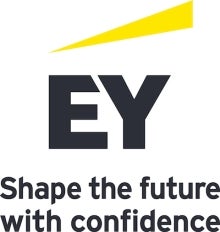Advances in tech and a need for talent highlight opportunities for family offices to evolve, Wharton Global Family Alliance survey shows.
In brief
- Risk management is among top priorities, but implications can be easy to overlook in outsourced services, data protection and succession planning.
- Generative AI remains on the sidelines for now, but family offices can begin strengthening the foundation for the technology and exploring use cases.
Ernst & Young LLP (EY US) and the Wharton Global Family Alliance (Wharton GFA), a world-leading research forum created by the Wharton School of the University of Pennsylvania and the CCC Alliance, formed a three-year collaboration to advance knowledge on issues and trends impacting multigenerational family businesses and their offices. This article is an output of the collaboration and represents EY US’s views on the findings of the 2024 Family Office Benchmarking Report by the Wharton GFA.
Family offices face the need to re-evaluate their operating models over the near and long term, and they are increasingly choosing to leverage external providers specialized in a particular area of need. However, new research in the Wharton Global Family Alliance’s 2024 Family Office Survey shows the inherent obstacles to making the change from a do-it-yourself group to a lean, flexible organization capable of selecting and managing world-class partners.
It’s an exciting time for family offices to reframe potential challenges as competitive advantage. These relatively small organizations are tasked with implementing and working successfully with a huge array of disruptive new technologies. They must address a complex world that demands access to better information, as well as young workers who expect to be freed from low-value tasks by automation, outsourced services and increasing AI. Leveraging and controlling information means balancing risk and opportunity — AI, for example, promises to deliver extraordinary results, but users quickly realize that managing it requires a deep understanding of its inherent biases and opaque decision-making processes. And as family offices forge new relationships, each one exposes the family to new privacy concerns, and it requires management to focus on collaborating with firms that are often vastly larger than their family office clients.
It is therefore no surprise that family office respondents in the Wharton survey say their main priority currently, aside from driving higher investment returns, is managing risk. And when asked about their main risks, they cite information security and cyber risks, reputation management and privacy, and financial fraud and identity theft — all of which are part of the technology risk profile and supported by the back office. They are reflections of how much family offices have evolved in the past few years, as well as how much more that they can achieve with proactive consideration.
In this environment, technology, people and processes must all evolve in parallel. If a family office is working with new technology, they are confronted with the challenge of marrying it with existing staffing, governance and processes. Given the difficulty of hiring, we are forced to consider hybrid operating models that create access to different pools of talent, including outsourcing to service providers that have equal if not better capability and scalability, creating a new paradigm of sophisticated co-sourcing. Yet if handled improperly, such new operating models expand risk, not manage it. And with so much disruption in the present, it’s easy to lose sight of the future in the form of succession plans.
Methodology of the Wharton survey
The online survey instrument was developed and distributed in Q1 2024, both directly to family offices and through a select number of firms that have family office clients. Survey respondents are from 21 countries spread across North and South America, Europe, the Middle East, Asia and Australia. In the Wharton sample, 47% of the family offices serve 1-3 households, about 25% serve 4-6 households, and about 28% serve more than 7 households. About 30% of sample family offices employ 4-7 professionals and about 25% employ over 12 professionals. With respect to the assets under management, 34% of respondents have less than $500 million, 24% have $500 million to $1 billion, and 42% have greater than $1 billion.
Here are four areas of focus for striking the right operating model and moving into the future with confidence.
- Talent and outsourced services for family offices
- Data protection and its role in enabling the future
- Generative AI: being positioned for tomorrow
- Further into the future: succession planning
Chapter 1
Talent and outsourced services for family offices
Family offices are increasingly gaining specialized help during a disruptive time for tech and talent — an approach that can pay dividends but also can entail new forms of risk.
Chart description: The types of services and activities that are enabled through the use of a family office and a breakdown of who provided the same services and activities without a family office. Asset allocation ranks as the most-enabled activity, which was typically done by in-house staff.
Within the focus area of people, family offices rely on an array of advisors, as shown in the chart above, whether for common needs such as banking, accounting and legal services or even for less common items like education of family members and philanthropy. On average, family offices spend almost 40% of their budgets on outsourced services (about 30% in investment management as well as 10% in other areas such as back-office support services). With the exception of real estate assets and principal (direct) investments, which are generally managed in-house, the management of other asset classes is outsourced to specialist managers.
By leveraging multiple providers for non-investment services, family offices are gaining specialized help in a difficult market for talent — an excellent strategy in a very dynamic environment. Doing so does not come without risk, as they are also opening themselves up to greater complexity that must be managed. Further, more and more vendors in the market are looking to capitalize on the trend of buy rather than build and may not yet be fully qualified to offer complex and high-touch service needs in a cost-effective manner.
In terms of operating models, single-family offices are also considering new ways of leveraging external providers to support or operate certain functions that require the need for specialized platforms and resources, the separate EY Single Family Office study found. Many single-family offices are collaborating with external partners to support their agenda around risk and operational scalability. Our survey found that more than 90% of single-family offices are either currently leveraging or are considering co-sourcing functions related to risk management across the operating model.
Part of this acceleration toward third-party support stems from a broader set of external service providers — not just law and tax/accounting firms but also banks and others — with enhanced capabilities to support an outsourced model through greater scale and broad expertise to leverage. Such vendors are increasingly adopting institutional-grade industry accreditation to validate their process and control environments, with System and Organization Controls (SOC) and International Organization for Standardization (ISO) badges.
We recommend:
- When outsource providers play a significant role in your operating model, bring the same controlled rigor (if not more) to evaluating and monitoring your partners at a board or committee level, just as you would oversee your internal executive team. That is typically done through better governance and oversight frameworks, in the form of service-level agreements (SLAs) and key performance indicator (KPI) regimes in service contracts, as well as advanced data management capabilities that look across platforms and systems.
- Look to technology vendors or outsource service providers that have SOC or ISO accreditation as part of the selection or annual review process.
- When a vendor says it leverages AI, do further diligence on what that means — is it bringing optical character recognition or machine learning capabilities on data, or supporting with workflow efficiencies, or making actual decisions?
Chapter 2
Data protection and its role in enabling the future
Family offices know that data is crucial to becoming better organizations and must be protected. But the Wharton survey reveals gaps between what family offices are saying and what they are doing.
In the Wharton survey, family offices realize that data underpins their future and must be protected, crossing the domains of technology and processes. As such, family offices want to do more with their data. Yet those intentions must be matched with concrete plans and risk management.
About a quarter of respondents to the Wharton survey (24%) say that their family office or its personnel data has been compromised/breached by hackers or other unauthorized users — a jump from 16.7% in 2022. And of that group, 34% say the breach was slightly or moderately costly, while 8% say the fallout was extremely costly.
On average, family offices employ less than one FTE IT professional and few of these are cybersecurity experts. Even though family offices have identified cybersecurity risk as a top concern, responses indicate that they are not taking sufficient steps to address these risks. Family offices must ensure that cyber and IT risks are evaluated and that response plans are vetted, drawing from a risk framework developed at a board level.
In general, the information technology department in a family office supports a broad range of services, delivered by both in-house IT staff and external vendors. Less than 30% of family offices carry cybersecurity insurance (down from 45% in 2022) despite the potential costs associated with a data breach. However, 75% of respondents reported that they have experienced phishing attacks, compared with 60% in 2022 — a 15-percentage-point increase.
Chart description: The areas within the family office that are evaluated to measure cybersecurity protocols. "Network, cloud and data center protection" was most highly evaluated with 82%.
The technology stack of a family office is truly mission critical as it enables many of the tasks associated with financial management, information consolidation and aggregation, along with client reporting. Wharton survey respondents tell us that they choose such a platform primarily based on how well it can adapt to the specific context of the family office, along with ease of use and accessibility. Cost and complete confidentiality, the other criteria offered in the survey, tie for the lowest ranking — another warning sign that security isn’t always treated as a priority.
Chart description: The criteria a family office uses to choose the best consolidation and/or aggregation platform. "Adaptability to my context" was the highest-ranking choice.
One way that family offices are strengthening their risk profiles is by leveraging external service providers that have prebuilt institutional-grade capabilities. A side effect of looking to these vendors for services comes along with the vendor’s track record of meeting the needs of other large allocators (such as fund managers and public pensions) with tighter operational risk requirements.
Recommended service
We recommend:
- Before signing with a new vendor or service provider, review service contracts for considerations such as ownership of data (what they can use your data for and whom they can share it with) and data retention and retrieval after the service terminates.
- Perform appropriate due diligence on a managed service provider outsourced IT. Examine how many other single family offices they service, the service location and familiarity with the technology the family office uses.
- Ensure your risk management framework addresses cyber risk in line with the spread of your information across partners, especially if your operating model heavily relies on outsourcing. Consider leveraging vendors that support institutional allocators and that meet their risk management needs.
Chapter 3
Generative AI: being positioned for tomorrow
Talent and data are essential for advancing the most disruptive technology since the internet: GenAI. Family offices are mostly not leveraging GenAI yet, but they should be cautiously exploring it.
Chart description: How Artificial Intelligence tools affect family office investment management processes. Most respondents, 56%, said it had no effect.
Since becoming more simplified and consumer-facing, GenAI has rocketed up boardroom agendas — but at family offices, which are rightfully cautious, its impact is largely still not yet being felt in their operating models. Among respondents, 10% reported that they use AI tools to generate new investment ideas and themes, but 56% answered that AI tools have no impact on the investment management process and 25% responded they do not know the impact yet.
GenAI has multifaceted use cases. For instance, GenAI can be used to query existing financial data to create future scenarios or return just-in-time analysis that might take an analyst several hours. More broadly, overall decision-making capabilities about many data-driven topics can be enhanced with GenAI, and everyday worker productivity can be boosted as well.
As familiarity with AI tools and their capabilities increases, family offices are more likely to embrace adoption. But today, that feels like a farther-out future: on average, family offices tell us that they have just 0.5 IT professionals on staff, who are typically more oriented around the “boxes and wires” of keeping technology operating instead of AI-specific domains. Another challenge is that many family offices invest in private markets, where unstructured data sets are not as accessible for identifying patterns, trends and correlations.
So what should family offices do now with GenAI? It’s better to leverage partners first as you build up your internal capabilities and adopt more specialized use cases within your organization. The first step is education to level up skills in the office and provide growth opportunities for employees, raising retention. The earliest use case could be using GenAI tools to work more efficiently: drafting communications, summarizing data, preparing family presentations and other tasks, guided by a thoughtful human worker.
Recommended service
We recommend:
- As part of any strategy, the data component again looms as a primary concern. Data storage, construction and management are key foundational elements of GenAI, which can also present new risks to manage and information to keep secure.
- Think about privacy and setting some ground rules on use. For example, uploading information to a public AI model poses a security risk, and data stored in the cloud for use by AI can also be breached — therefore, proven partners should be relied upon for AI tools, which must be thoroughly vetted. And relying on AI tools for decision-making could also compromise the fiduciary duty of care in ways that are difficult to understand.
- Understand that “has no effect” is likely the wrong answer — the technology is poised to change business-as-usual in every sector. At a minimum, your vendors should be more heavily involved in GenAI, which should affect how you select and evaluate them.
Chapter 4
Further into the future: succession planning
Facing a mix of so many opportunities and challenges today, family offices are evolving dramatically — but they cannot lose sight of the people issues of tomorrow, particularly succession planning.
Forty percent of family offices in our sample were established after 2000. The original wealth creators account for 27%; 31% of the principals or beneficial owners of the family offices are in the second generation, while 25% of the principals or beneficial owners of family offices are in the fourth generation or later. Therefore, the good news is that most of family offices polled have some experience with a handoff from one generation to the next.
But while the operating entity may be prepared for succession, the family itself may not be. Families that have experienced disruption often experience issues on the family side, which damages the symbiotic relationship with the family office. About 40% of respondents reported that they have a formal succession plan for the leadership of the family office (moderately higher than 2022). And that figure is even lower — around 20% — for the family and for professional management of the family office, both of which represent double-digit declines from 2022. Additionally, a third of respondents reported that they have an informal succession plan (perhaps a verbal agreement).
The foundation for success relies on parallel governance, in which the family office provides operational confidence to the family member owners, who in turn return a patient capital base to the family office for investing and growth. Among the challenges they face, family offices primarily cite the young age of the next generation for planning their future roles (39%, compared to 26.2% in 2022) and the potential discomfort in discussing this sensitive subject matter (30%, a jump from 13.1% in 2022). And 22% say that no next-generation member is qualified to lead the family or family office, about the same as in the prior survey.
Chart description: The challenges facing family offices in respect to succession planning. The highest-ranking answer with 39% indicated "the next generation is too young to plan for their future roles."
When it comes to trustees (who ultimately can control investments and businesses if deposited in trust), 58% of respondents reported that they are individual family members, while 50% reported that the trustees are non-family individual advisors. Based on our experience, an individual trustee tends to be an older generation, again raising the issue of succession.
Recommended service
We recommend:
- Understand that transition planning can take a decade or more and that the best time to start thinking about family governance is before changes occur or transitions begin. Today’s owners should mentor the owners of the future for the cohesion, stewardship and competency needed to sustain a healthy business for generations.
- Establish separate governance structures for the family and the family office, with clear communication and direction flowing between the two. The family governance focuses on developing a harmonious and capable shareholder base, while the office governance oversees strategy, growth and performance.
- Regularly scrutinize who your trustees are and how they are qualified, with clear metrics. According to the survey, the most important criteria for selecting a trustee are privacy and confidentiality followed by loyalty and independence. Are these the best priorities?
Summary
To rapidly adapt to technological advancements and gain specialized services amid talent shortages, family offices must explore new operating models with a focus on effective governance and strategic planning. The Wharton Global Family Alliance’s 2024 Family Office Survey reveals the nuances between managing risk and capitalizing on it, showing areas that are being overlooked in a disruptive business environment.






 />i
/>i
